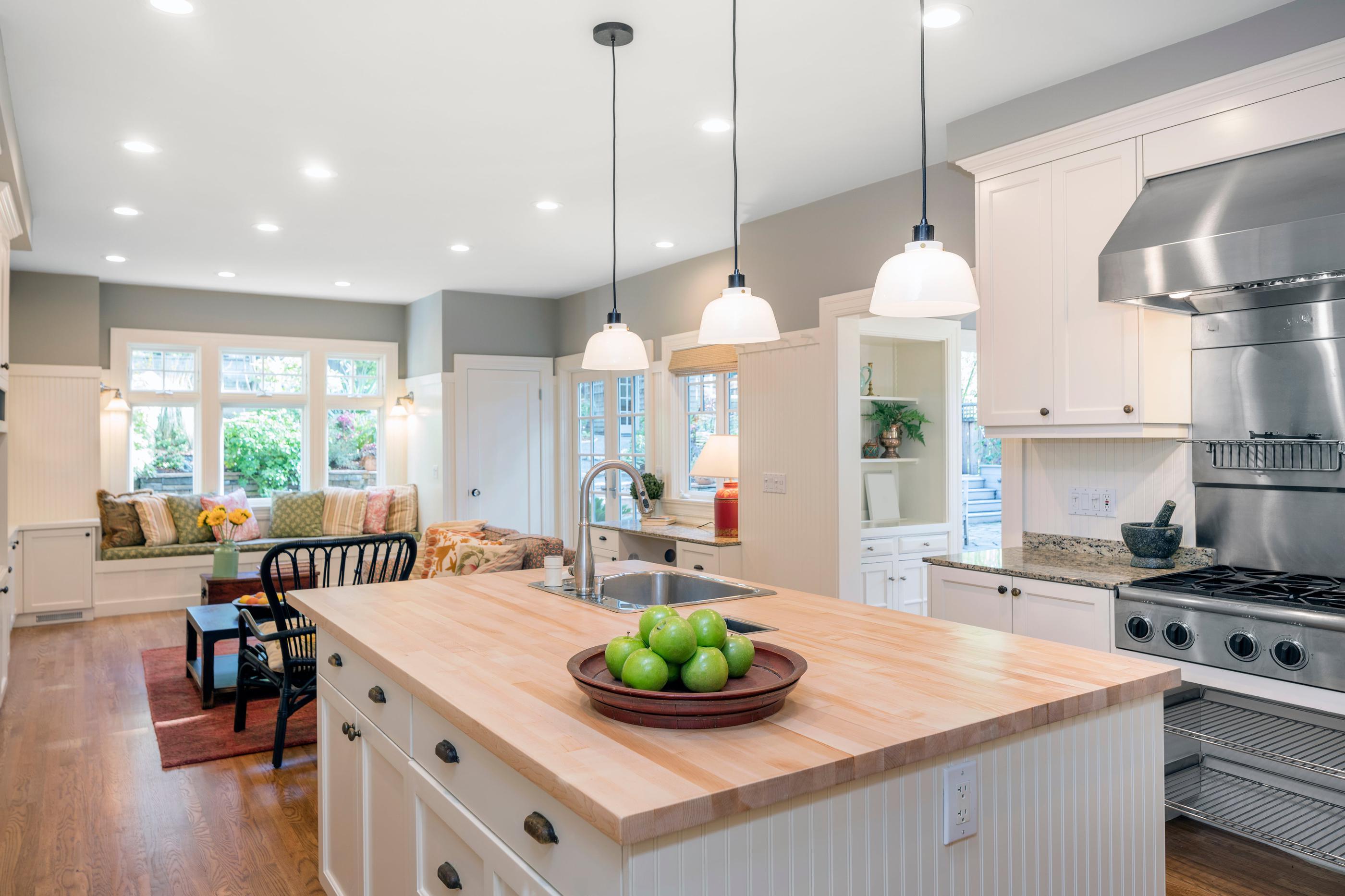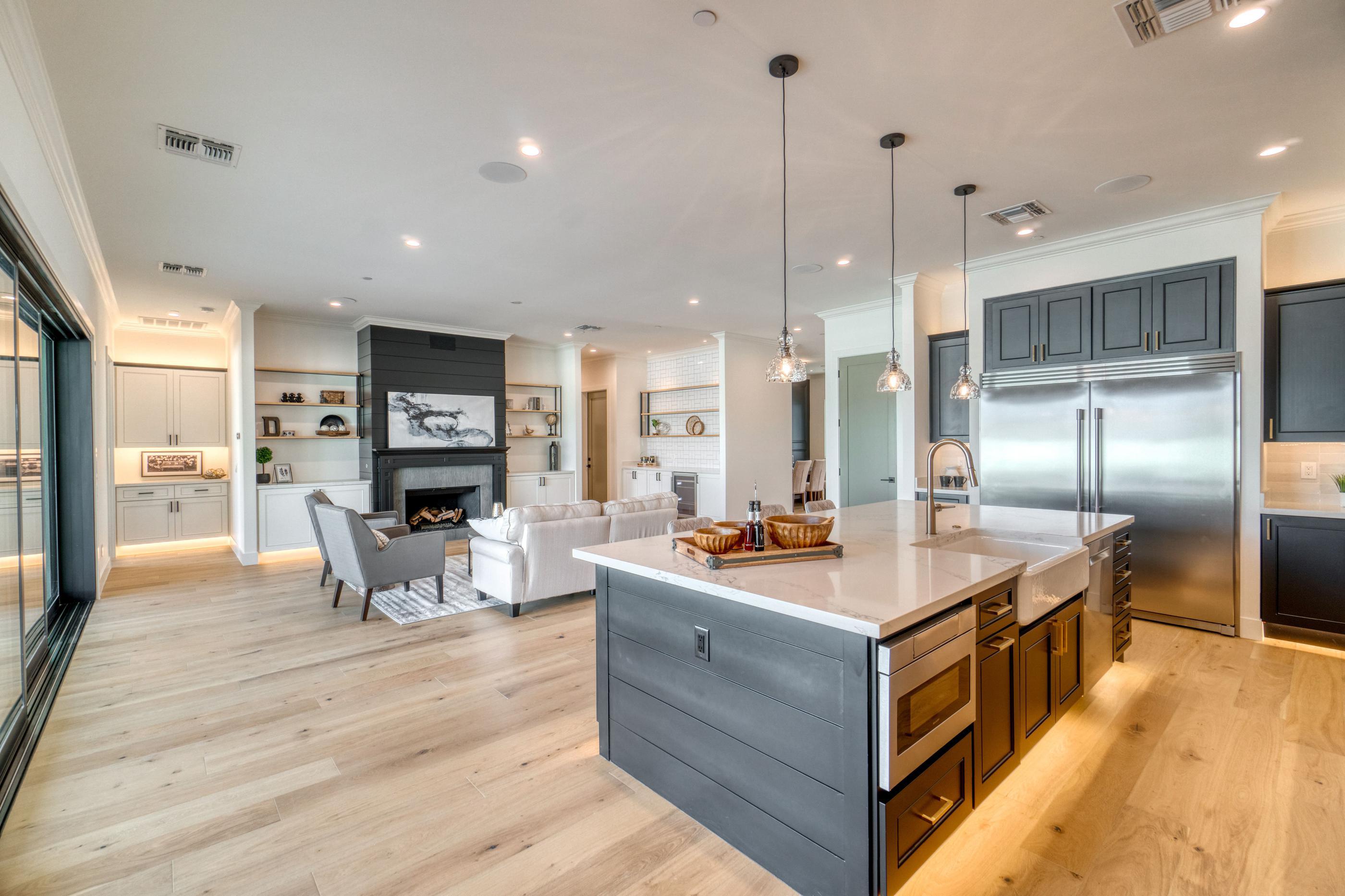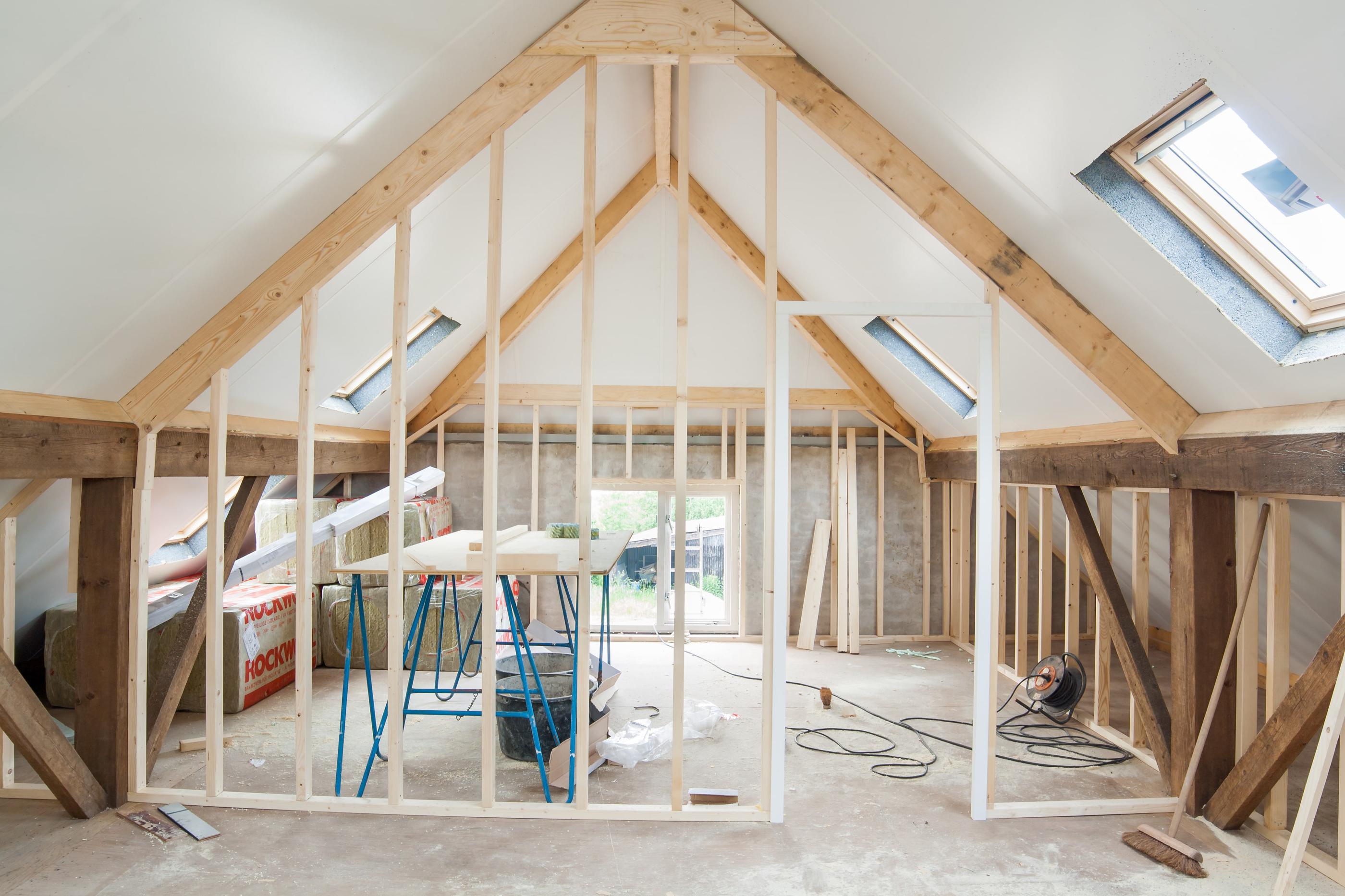Everything that matters at home touches the kitchen counter. It’s the silent participant in our daily routines, from making dinner and checking homework to chatting with friends.
Choosing a countertop is also one of the most exciting features of a kitchen remodel. We imagine how each option will support our workflows and how it will look with our new cabinets.
We also need something that will last, fit our budget, and align with our cleaning and maintenance expectations. All the while, we’re investigating trends and sorting what’s popular from what’s best for our space.
Consider the following a primer on materials, design details, and more. This is the ultimate guide to kitchen countertops for 2025, with an eye on helping you choose a counter that serves a beautiful purpose into the next decade.
What are the best materials for kitchen countertops?
Engineered stone vs. natural stone countertops
What to consider when choosing a kitchen countertop
Selecting finishes and edges for kitchen countertops
Pros and cons of different countertop materials
What’s trending in kitchen countertops for 2025?
Visit a showroom near you to find your new kitchen countertop
What are the best materials for kitchen countertops?
Quartz (engineered stone) and granite (natural stone) are widely regarded as the best kitchen countertop materials. With their high resilience and attractive appearance, they should remain at or near the top of your list. But they’re not your only options.
From rare, high-end stones to innovations in manufacturing, it seems that nothing’s impossible in kitchen countertops. The following materials include some of the most widely available mainstays, along with emerging trends appearing on every designer’s list.
Quartz
A quartz countertop is a manufactured blend of ground-up minerals and resins set into a virtually indestructible slab. With an incredible range of colors and patterns, as well as very low maintenance requirements, it has quickly risen to the apex of countertop options.
Its popularity isn’t merely a trend. The global quartz countertop market is currently valued at over $85 billion and projected to reach nearly $100B in the next several years.
| ✵Recommended reading: Did you know it’s possible to repair your own quartz countertop? Check your warranty, then use our expert tips to do it right. |
Granite
Granite is a natural, plentiful igneous rock mined in large slabs. The color and pattern variation are iconic in kitchens worldwide. It’s a high-strength stone that ticks nearly every box in terms of heat, moisture, and stain resistance–although avoiding careless exposure to heat and chemicals is recommended for a long, beautiful life.
Sealing granite countertops is necessary to protect the piece and avoid bacterial growth. Homeowners must also search for the color palette and pattern they like best, as it’s a one-off design that took nature millions of years to craft.
Wood
The long-term condition and quality of a wood counter depend very much on the type of wood. The most popular hardwoods used are maple, oak, and walnut, but there will be noticeable differences even among the three.
Wood countertops are always a naturally beautiful, sustainable option for kitchen islands and dedicated prep areas. Designs that want to include more than one countertop material frequently make way for wood.
Stainless steel
Prevalent in professional and commercial kitchens, stainless steel is the platinum standard in sanitary materials. The metal is also highly resistant to moisture, heat, and stains.
Selecting the right finish can mitigate common gripes like too much reflectivity or obvious fingerprints. Owners will also take care to avoid dings and dents.
Marble
Marble countertops are a natural stone slab mined from a quarry.
Like granite, a piece of marble will be unique, completely one of a kind. Best loved for its appearance, other manufactured materials are designed to look like marble.
On top of being among the most expensive materials, it is also the most maintenance-intensive. It’s a softer stone that’s prone to scratching and etches with exposure to most acids and cleansers.
Ceramic tile or porcelain
Tile countertops offer good heat resistance and a wealth of design options. However, grout comes with more maintenance requirements than many homeowners would prefer. The new wave in “tile” countertops is large, single pieces of porcelain that often mimic the look of other stone countertops.
Porcelain countertops are very durable. The heat-treated clay is a stronger, denser material than many anticipate. However, porcelain is typically lighter and thinner than a slab of something like quartz or granite. It may therefore be more prone to cracking.
Concrete
Yes, concrete counters are gaining a bit of popularity in kitchens. It can look marvelous in industrial-style kitchens and right at home with rough edges in other contemporary designs.
Your concrete countertop must be sealed against liquids and bacteria since the material is porous. And much like your patio, you may notice hairline cracks and other imperfections after a few years.
Ultimately, we suggest considering concrete for outdoor kitchen countertops.
What is the difference between laminate and solid surface?
Laminate is the most budget-friendly option in countertops, common in builder-grade kitchens. It consists of sheets of printed material adhered to particleboard.
Solid surface is a slab of non-porous plastic resins and minerals. It’s more budget-friendly than quartz or granite, but an upgrade from laminate.
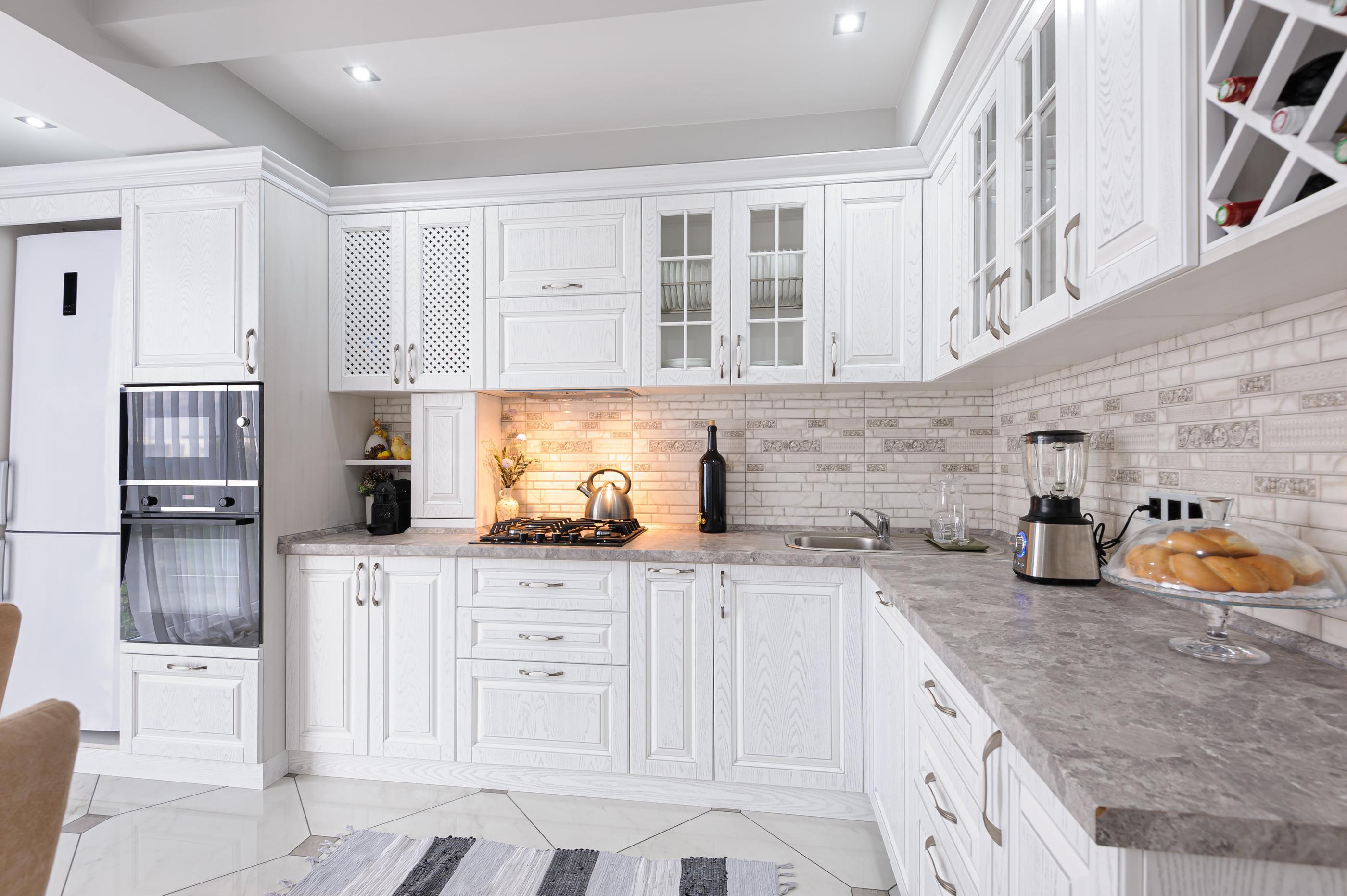
Engineered stone vs. natural stone countertops
Engineered stone (like quartz) combines natural minerals with resin and pigment. Natural stone (granite, marble) is a piece cut and removed from a stone quarry. Is one better than the other? No, but some key differences can impact your ultimate decision.
-
Appearance. Engineered stone comes in many uniform, intentional designs. Natural stone is unique and inconsistent. This is important when you’re very particular about aesthetics and the ability to locate a replacement.
-
Maintenance. You’ll never need to seal a quartz countertop, but granite requires regular sealing. Other natural stones like marble or soapstone require even more care.
-
Durability. Natural countertops vary in durability based on the type of stone. Granite is highly durable, whereas marble is not. Engineered stone is built for maximum durability.
Compare costs on a case-by-case basis. While quartz countertops are expensive, they can be much more affordable than certain high-maintenance natural stones.
|
✵ These countertops rock. Check out our post comparing granite vs. quartz if these two are your only real candidates. |
What to consider when choosing a kitchen countertop
Price, appearance, maintenance, and durability are the most important factors when choosing a countertop. Your willingness to repair it if needed, cleaning frequency, level of traffic, and commonly used foods and prep methods all matter.
Ultimately, choose the best countertop for your lifestyle. Someone who doesn’t cook daily, has plenty of budget, and a small household can get away with pricier natural stones. Busy households, daily cooks, and people who want max ROI on a durable material will choose quartz.
Selecting finishes and edges for kitchen countertops
The material is far from the only factor impacting how your counters look. The finish and edges are two more areas to think critically about when imagining your design.
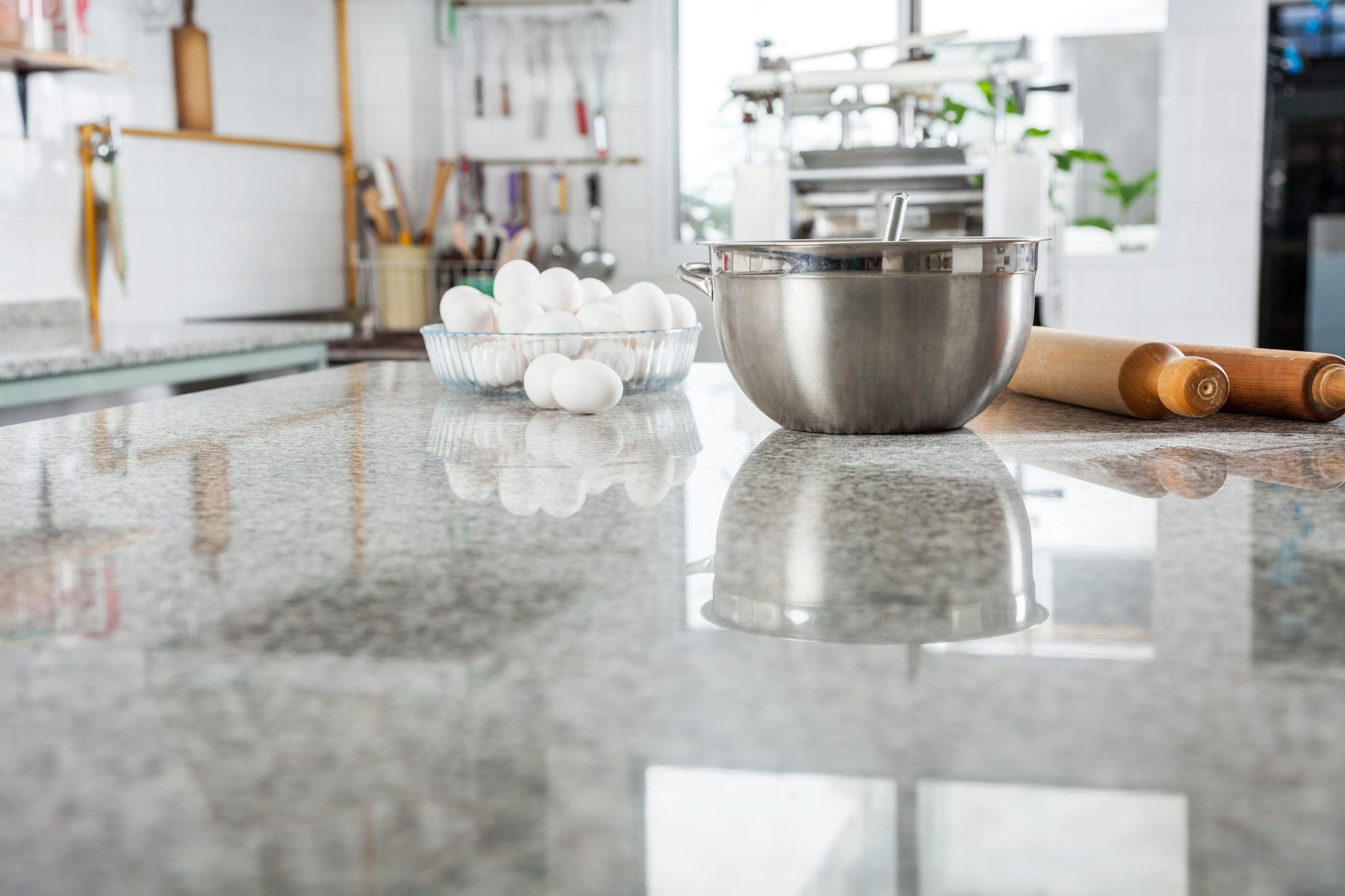
Countertop finishes
How shiny should your countertop be, and how smooth do you want it to feel? The finish of your steel, stone, or engineered stone countertop will determine its reflectivity and texture. You may not always have control over the finish, but don’t ignore this feature before installation.
-
Polished finishes are glossy and sleek, but will show more fingerprints.
-
Honed finishes reduce glare and have a soft matte appearance.
-
Brushed finishes have a bit of texture and depth.
-
Satin finishes are the middle ground between polished and honed.
-
Leathered finishes add even more texture while retaining some sheen.
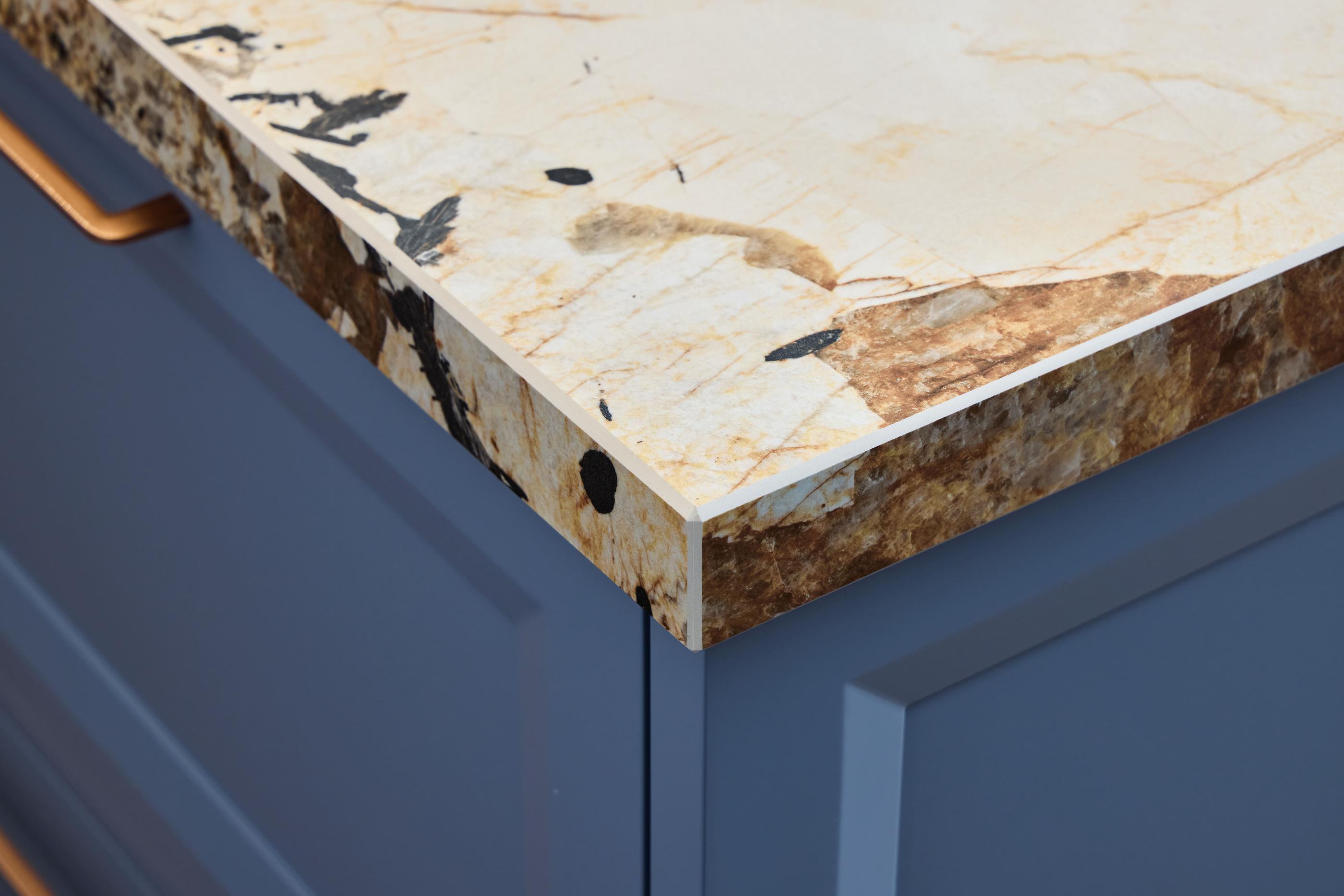
Countertop edges
The edge of a countertop doesn’t just enhance the design. Rounded bullnose edges can offer safety from sharp corners. Beveled edges can direct spilled liquids away from the cabinets below.
| ✵ Learn more about countertop edge styles and discover the difference these details can make in the function and appearance of your kitchen. |
Pros and cons of different countertop materials
By now, you may have discovered that kitchen countertops are a broader topic than originally thought. This section has fast, digestible facts on some popular types of countertops.
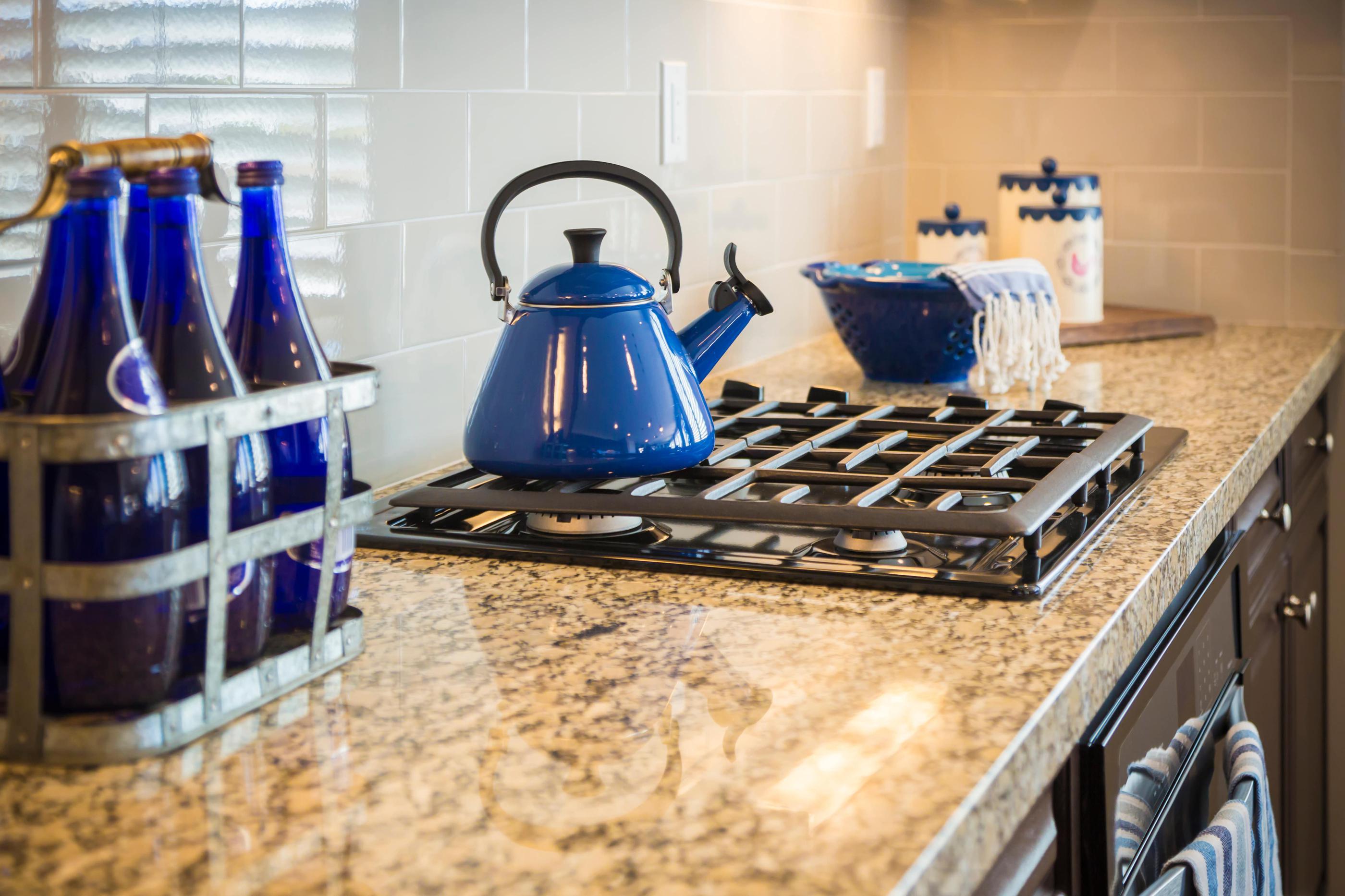
Pros & Cons of Granite Countertops
|
Pros |
Cons |
|
One of a kind appearance |
Requires sealing |
|
Hard natural stone resists chips |
More expensive |
|
Heat resistant |
No longer trending as high as quartz in buyer desirability |
|
Buyers recognize it as high-quality |
Because each piece is unique, it cannot be replaced |
Pros & cons of Quartz Countertops
|
Pros |
Cons |
|
Low maintenance, no sealing |
Expensive |
|
Huge range of design options |
Exercise caution with high heat |
|
Excellent durability |
Prolonged extreme UV exposure can discolor |
|
Very popular among buyers |
Not as unique/bespoke as granite |
Pros & Cons of Butcher Block Countertops
|
Pros |
Cons |
|
Natural, sustainable beauty |
Scratches rather easily |
|
Excellent aesthetics |
Porous, less sanitary than other material |
|
Can do minor to moderate DIY repair |
Regular maintenance necessary |
|
Decent heat resistance |
Moisture affects color and form |
Pros & Cons of Solid Surface Countertops
|
Pros |
Cons |
|
More budget-friendly than granite/quartz |
Seams may be visible |
|
One solid piece; no peeling layers |
Can scorch from heat |
|
Moderate scratch resistance |
Sizable cost leap from laminate |
|
Wide range of colors and designs |
Not everyone wants plastics in countertop |
Pros & cons of Laminate Countertops
|
Pros |
Cons |
|
Easy to replace |
Get damaged easily |
|
Easy to clean |
Doesn’t add value |
|
Most affordable |
Particleboard underneath can warp |
|
Lots of design choices |
Plastics on top layer not the most desirable or sustainable |
|
✵Need more? Get the pros and cons of more countertop materials, from ceramic to marble and stainless steel. |
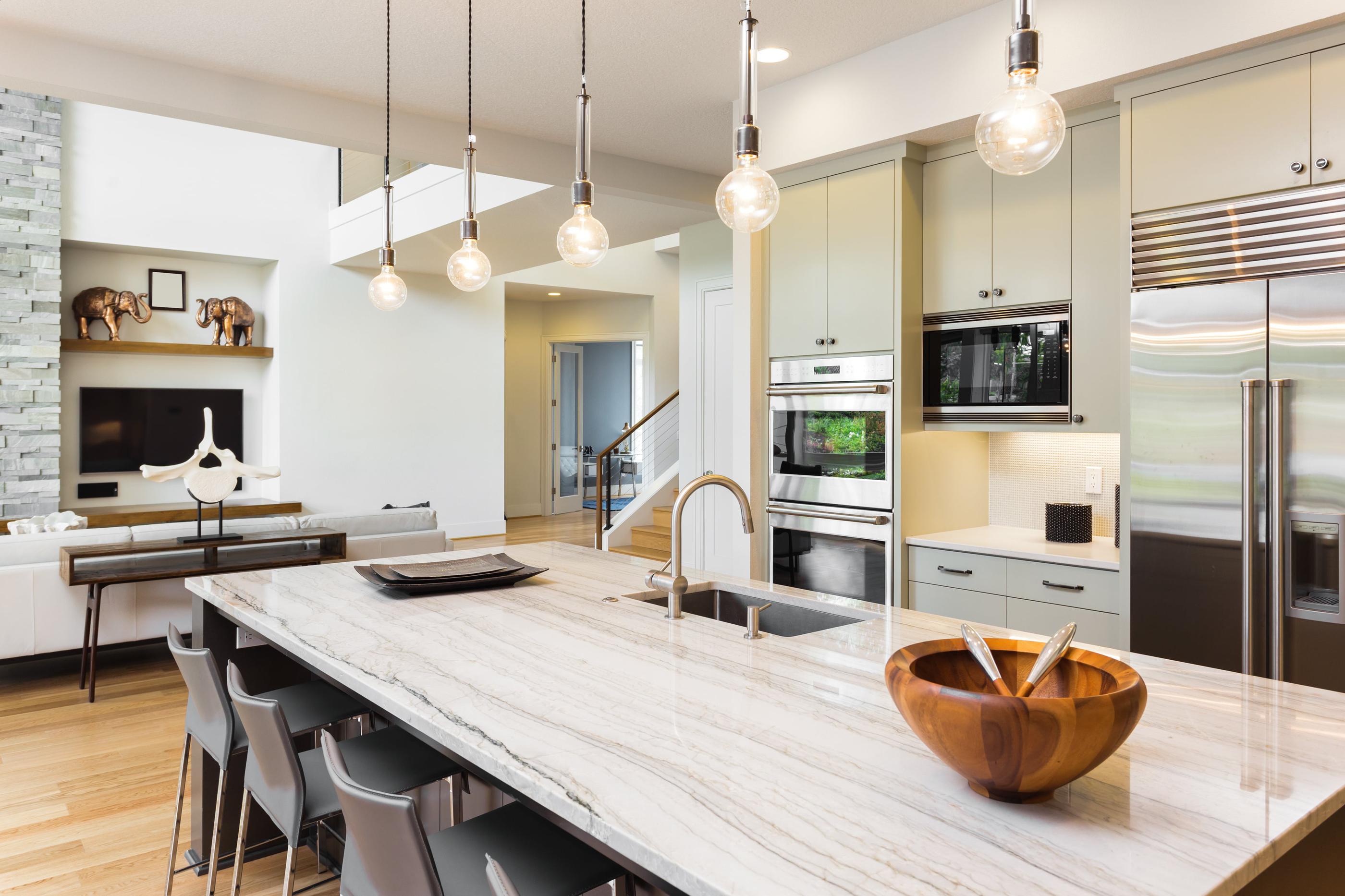
What’s trending in kitchen countertops for 2025?
Warm neutrals, stone-look veining on every type of material, and advanced integration are a few trends dominating countertops in 2025.
-
Warm neutrals: Muted, earthy browns, taupes, creams, and off-white are replacing colder grays and whites.
-
Veining and natural patterns: Manufactured porcelain and quartz pieces are taking on the look of costly, less attainable stones.
-
Advanced integration: Seams and gaps are solidly out, with some countertops being integrated with the backsplash.
Visit a showroom near you to find your new kitchen countertop
Like other design elements with tons of variety and customizable detail, it’s better to decide in person. The Designery connects you with products and craftspeople you won’t find at a big box store. We help ensure all elements of a remodel complement your new kitchen countertop.
A recent client of ours, Lynn, had this to say:
“They were very helpful in the selection of cabinets, flooring, countertops, and fixtures to be sure all matched nicely. Any issues or ideas that deviated from the plan were conveyed to us first to get approval before making any changes. Project was actually completed 1-2 weeks ahead of schedule!”
Find your closest showroom and book a free consultation with us.
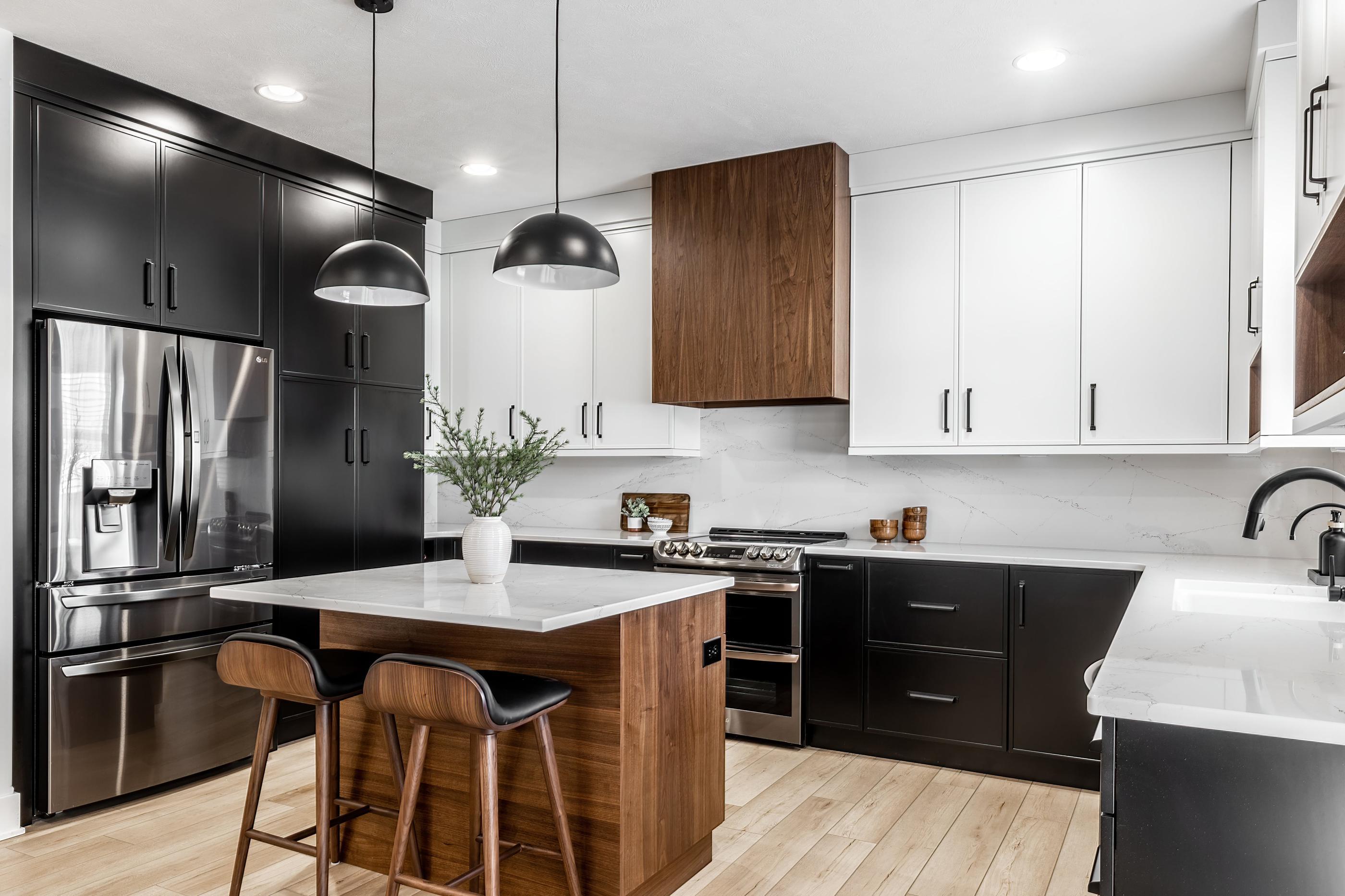
Kitchen countertop FAQ
Should I choose the same countertop for my bathroom as I do for the kitchen?
If you love the appearance and maintenance requirements of your new kitchen counter, you can certainly take it to the bathroom. Homeowners sometimes end up doing this with leftover materials.
However, it’s definitely not a rule or convention in the remodeling world. People usually choose different countertops for different rooms.
What color countertops go with white cabinets?
It depends on whether you want stunning visual contrast or subtle neutrality. Dark woods, deep grays, and onyx black look beautiful with white cabinetry. However, stone-look creams and grays feel calm and clean.
Get more examples and advice from our post on countertop colors and white cabinets.
What is the downside of soapstone countertops?
Natural soapstone counters are softer than quartz or granite, so they scratch more easily. They may also discolor when exposed to oily substances. These considerations, combined with the price tag, make soapstone a less common countertop choice.
How do you refinish butcher block countertops?
To refinish your wood countertops, you must remove stains, sand the wood down, reseal it, and condition it. Read our guide to refinishing butcher block counters for more detailed instructions.
Are quartzite countertops the same as quartz counters?
No, quartzite countertops are a type of natural sandstone, while quartz counters are engineered stone. Both are beautiful and durable, but quartzite is more expensive–one of the priciest options available to luxury kitchens.
Why did Corian countertops go out of style?
Corian decreased in popularity with the rise of highly durable quartz and granite countertops. Quartz countertops in particular offered a wider variety in design, attracting more buyers.
If quartz isn’t in your budget, solid surface options like Corian would be an alternative.

